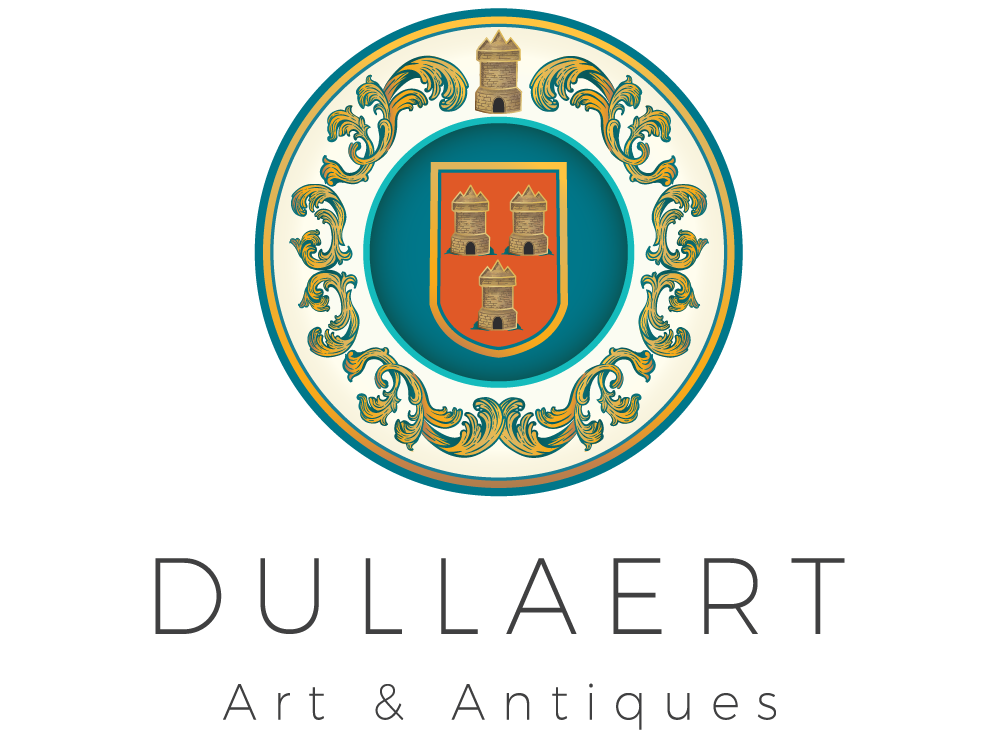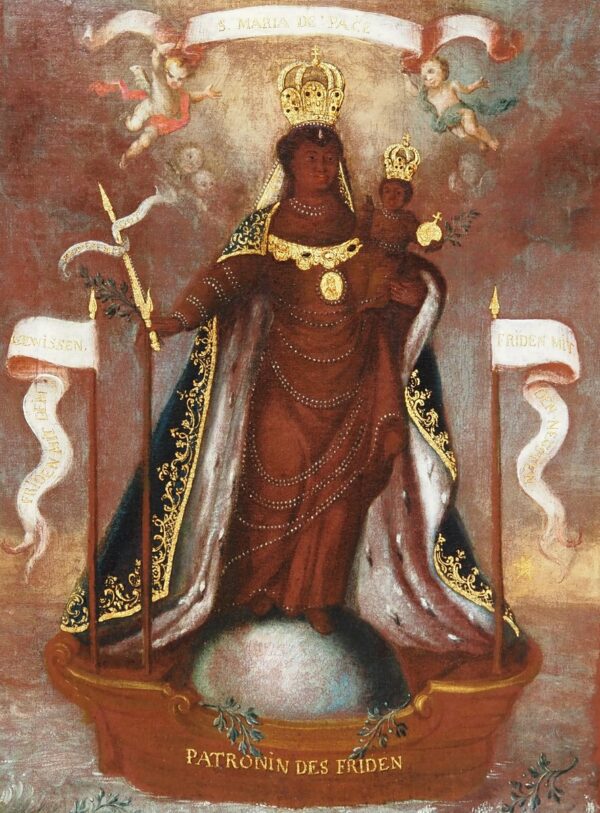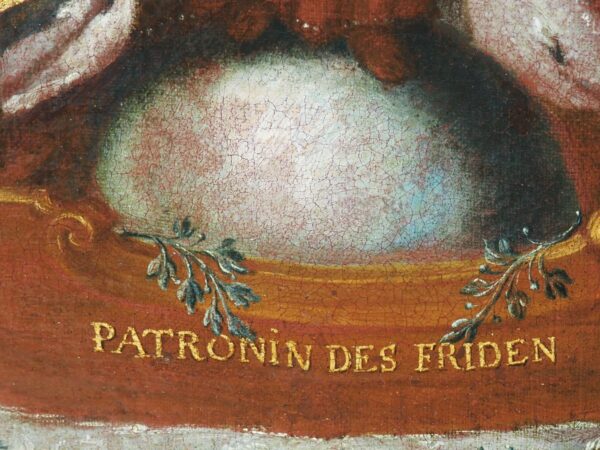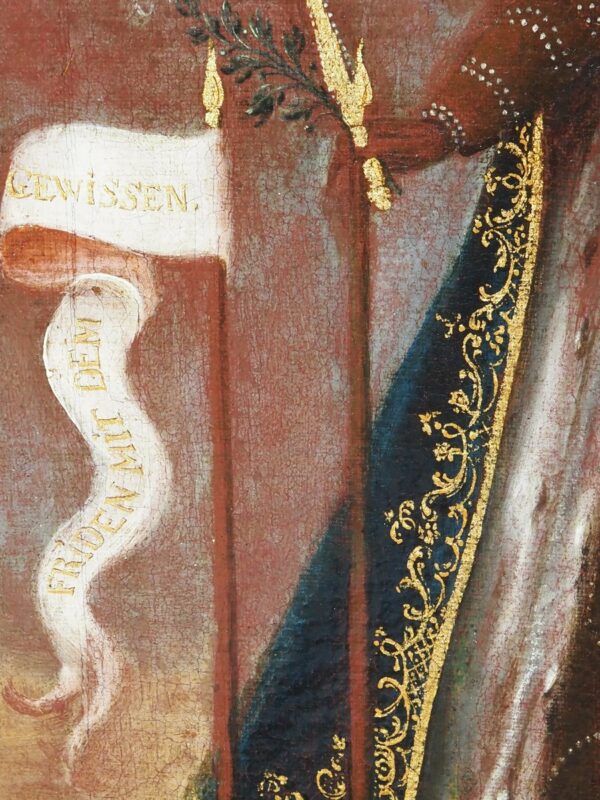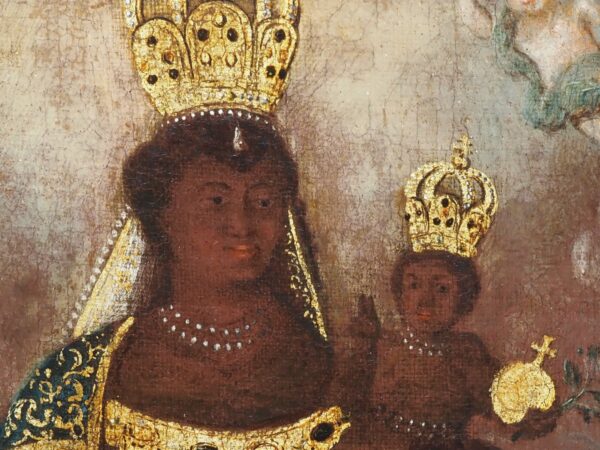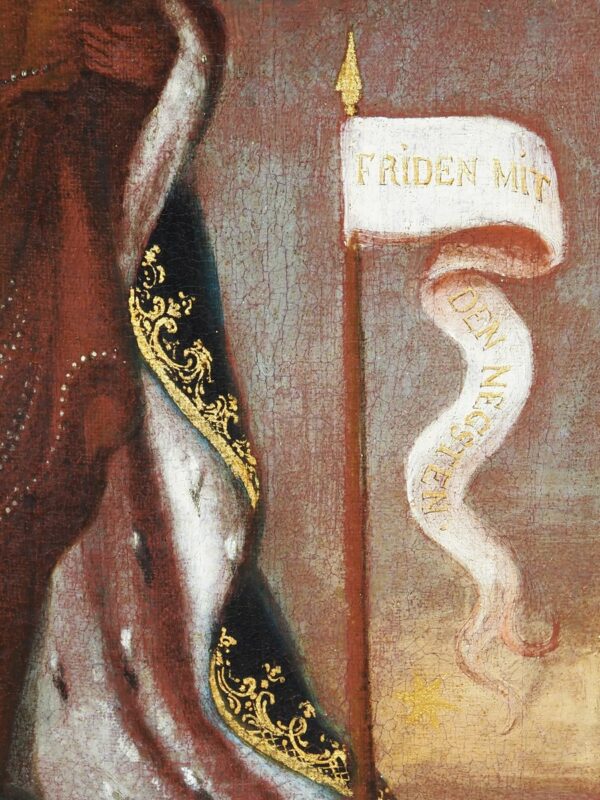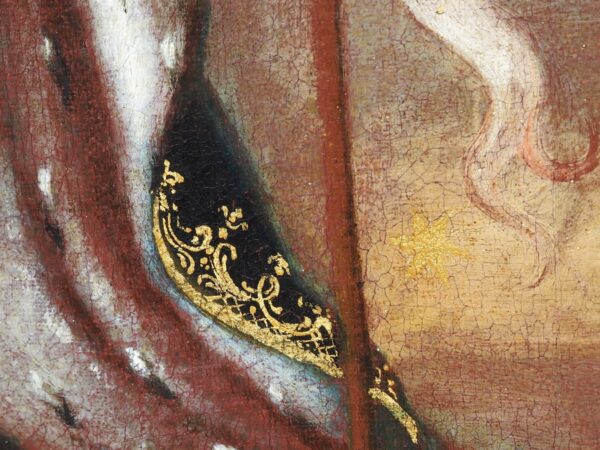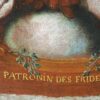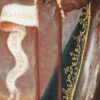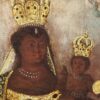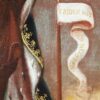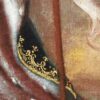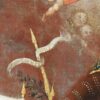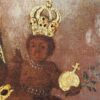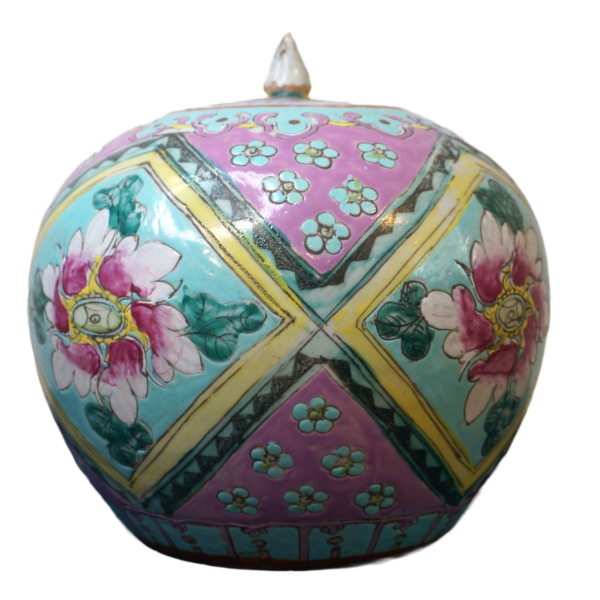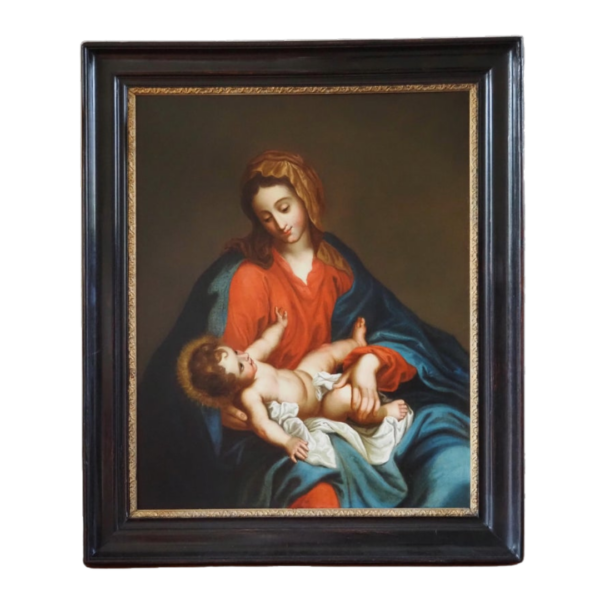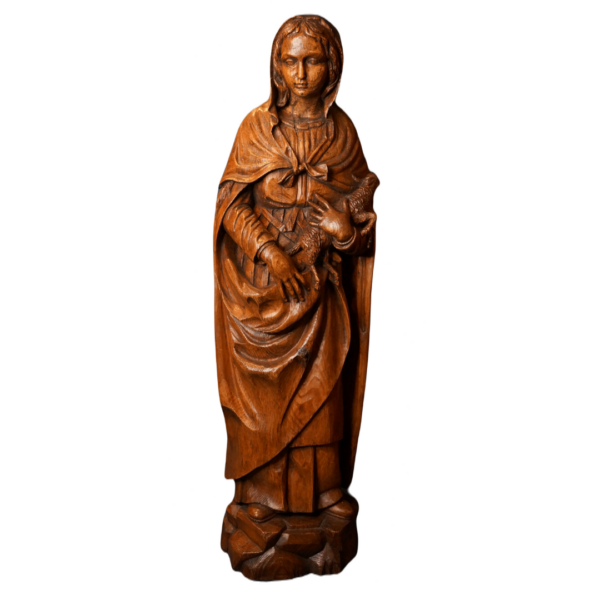Descrizione
Sancta Maria de Pace
Oil on canvas, mounted on panel
Probably Germany, 18th century
Dimensions: approx. 46 × 35 cm
Provenance: Private collection, southern Germany
This painting presents an exceptional and rare depiction of the Black Madonna as Sancta Maria de Pace, Mary, Queen of Peace. Both the Madonna and the Christ Child are dark-skinned and display distinctly African features and tightly curled hair. Mary wears a long brown undergarment and a blue-and-gold decorated ermine-lined cloak, white with black tail markings. In her right hand she holds both a sceptre and a branch, symbolising her role as Regina Pacis, Queen of Peace. On her chest hangs a golden oval medallion depicting a papal figure. She stands upon a globe, placed within a boat-shaped basin floating on still water, possibly a lake or sea.
The Christ Child, seated on Mary’s left arm, also wears a brown robe and holds in his left hand a golden orb surmounted by a cross (globus cruciger) and a branch, perhaps an olive branch. This symbol of peace is repeated throughout the composition: similar tendrils appear on both sides and also emerge from the basin in which Mary stands upon the globe. Both figures wear multiple strings of pearls, symbolising purity and spiritual authority, and are crowned. Above Mary’s head, a banner bearing the inscription “S. MARIA DE PACE” is held by two putti.
The composition follows the Baroque iconography of the Regina Pacis devotion, in which Mary is portrayed as an intercessor for peace: peace with God, with oneself (the conscience), and with one’s neighbour — a triad that also appears in theological writings and sermons on peace from the 17th and 18th centuries. Along the rim of the basin, in gold letters, is the inscription “PATRONIN DES FRIDEN” (“Patroness of Peace”). Attached to the sceptre in Mary’s right hand is a banner reading “FRIDEN MIT GOT” (“Peace with God”). On either side of the basin stand two poles with banners reading “FRIDEN MIT DEM GEWISSEN” (“Peace with the conscience”, left) and “FRIDEN MIT DEN NECSTEN” (“Peace with one’s neighbour”, right). Below the right banner, a five-pointed star refers to Mary as Stella Maris (Star of the Sea).
The image is closely related to a series of 17th- and 18th-century engravings from the Carmelite Convent Maria vom Frieden in Cologne, where the devotion to Maria de Pace arose around a Marian statue donated by Maria de’ Medici. This statue, later lost, was venerated as a miracle-working image and invoked as a bringer of peace, particularly during the Thirty Years’ War. Several engravings from this context depict Mary with the Christ Child upon a globe, holding olive branches and accompanied by inscriptions emphasising her title as Queen of Peace.
In contrast to these prints, which typically depict Mary with European features, this painting, like another known example in the former Augustinian Canons’ monastery at Pfaffen-Schwabenheim, presents a Black Madonna. There is no evidence that the original Cologne statue was dark-skinned, which makes these painted interpretations all the more remarkable. The combination of devotional iconography and African complexion renders this work an extremely rare representation within early modern Marian devotion.
Of particular note in the context of the Maria de Pace veneration is the presence of Edith Stein (Sr. Teresia Benedicta a Cruce) at the Carmelite Convent Maria vom Frieden in Cologne. She entered this Carmelite community in 1933 and remained there until her departure on 31 December 1938, when she left for the Carmel in Echt (the Netherlands) for reasons of safety. According to sources in the Edith Stein Archive, on her final day in Germany she made a brief visit to the Maria vom Frieden church, by then a parish church, to pray to the “Queen of Peace.”
